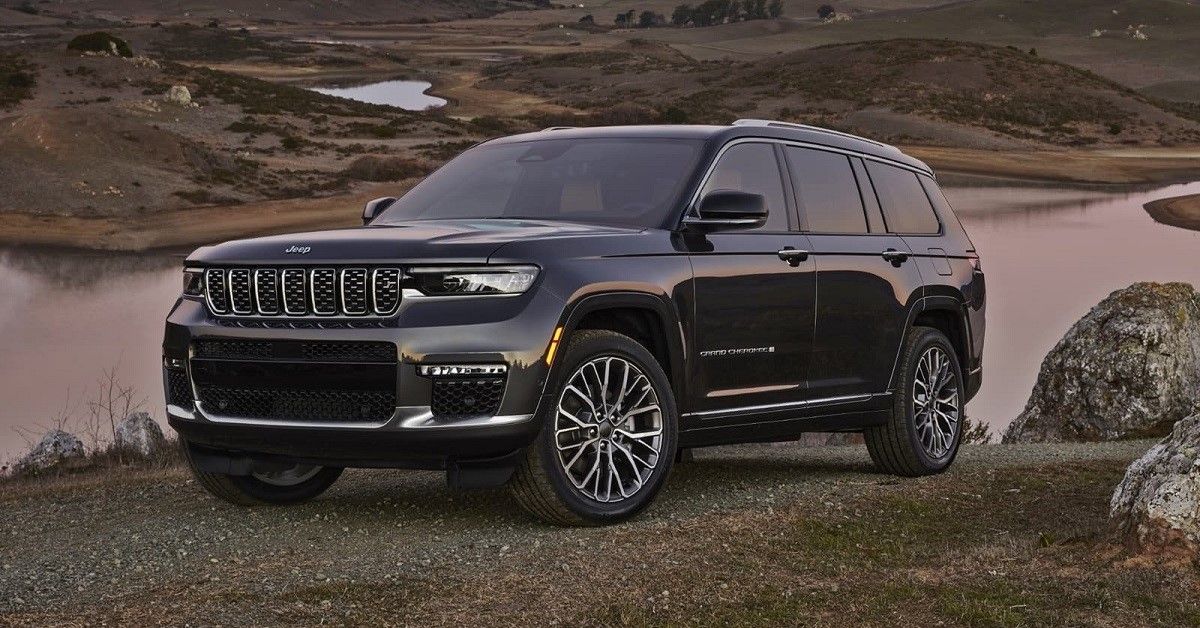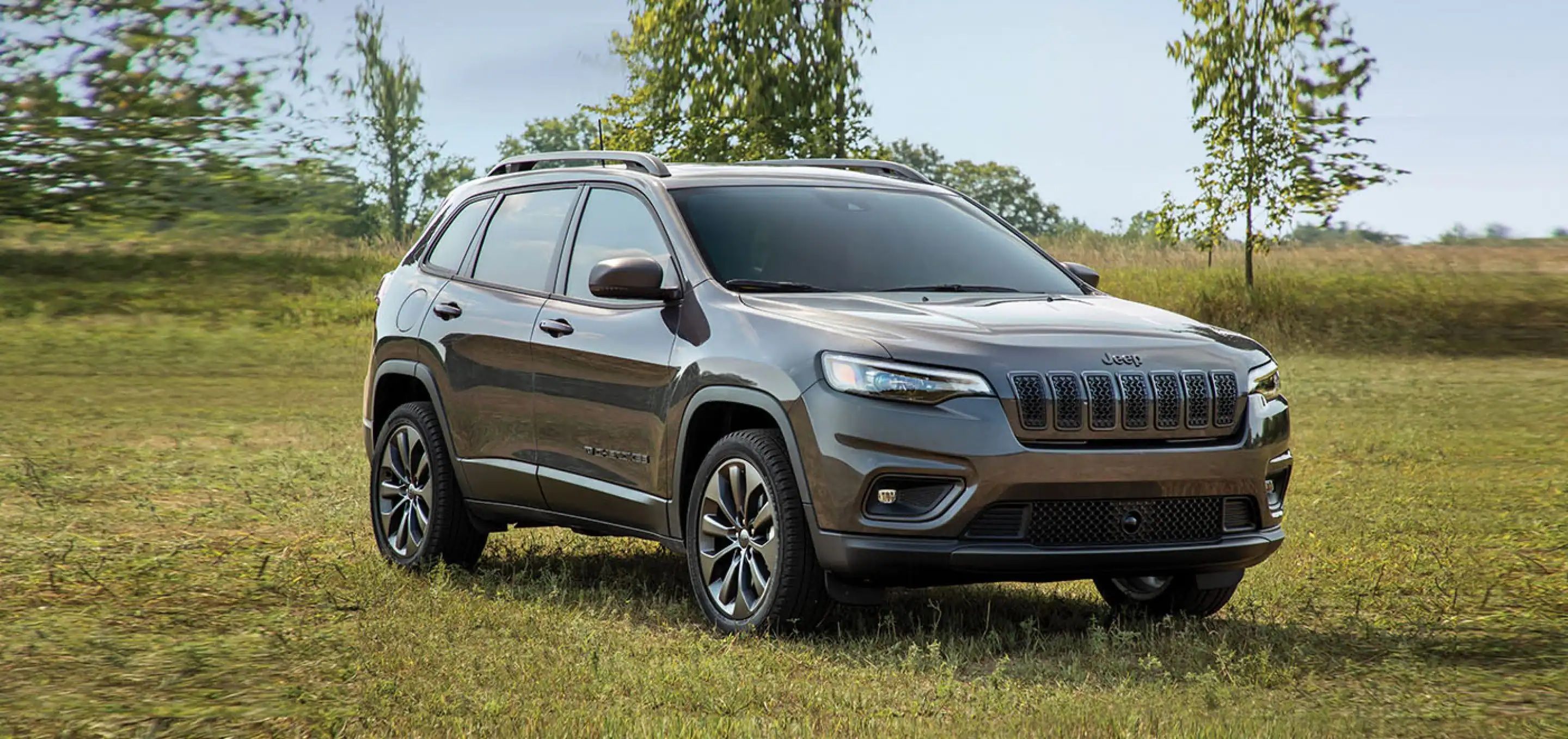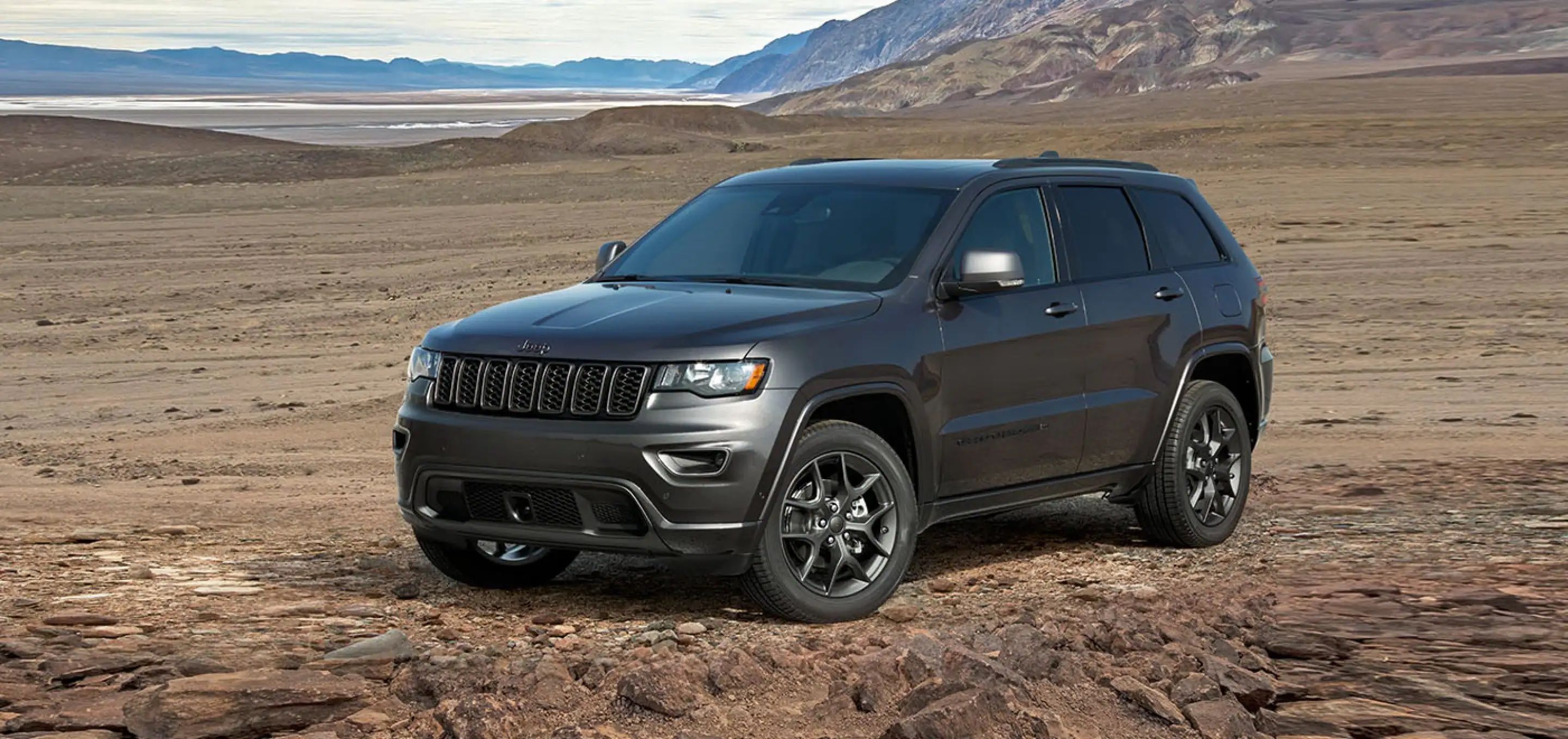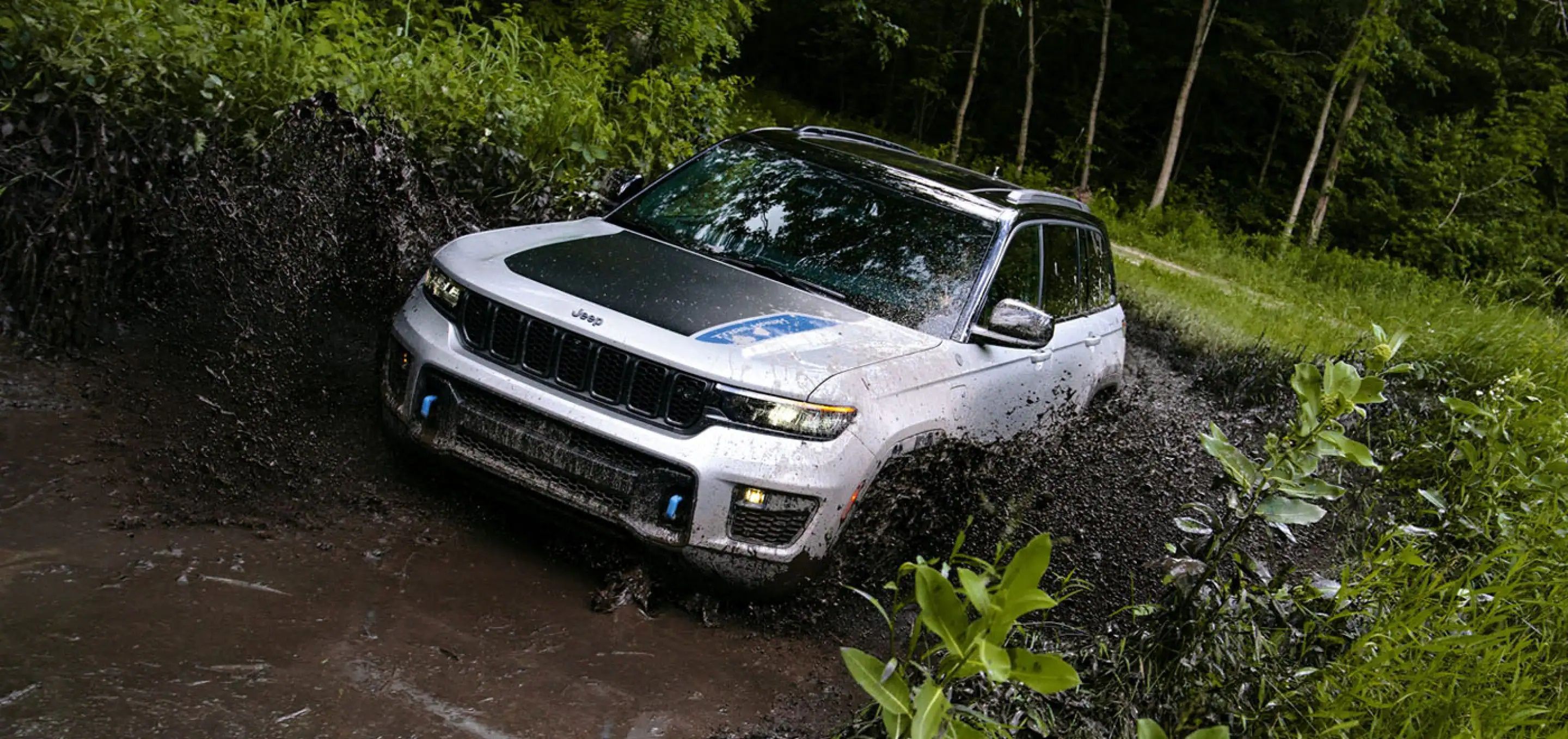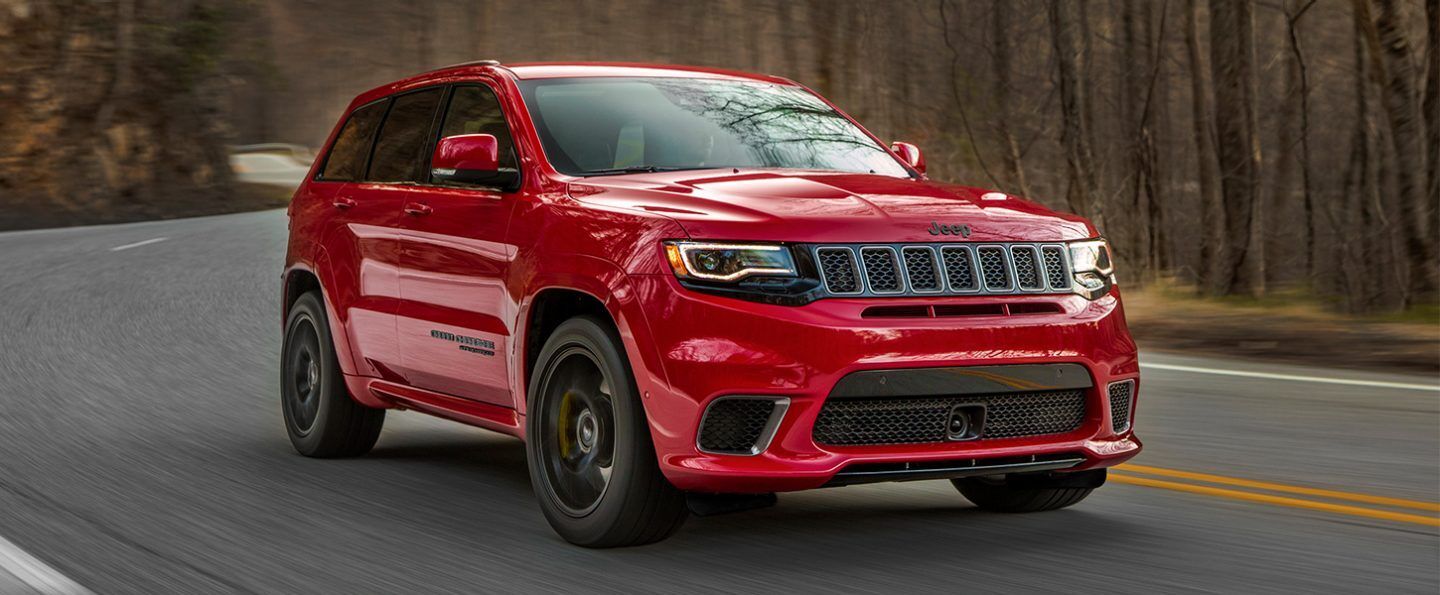Jeep doesn’t necessarily have one famous model, arguably all the cars in the current lineup are distinctive and likable in their own way.
From the Renegade which occupies a space in the growing compact crossover sector to the Compass to the utilitarian Wrangler, and finally the Cherokee.
The Cherokee is a successful model not just because of the romantic name – it conjures images of the great outdoors, of heritage, sunsets, and surviving in the wilderness.
It also offers both comfort and modern equipment, a rugged powertrain with a big engine (depending on the version) and 4x4, plus if you want it – speed. Offered in both normal and Grand Cherokee sizes, let’s have a brief look at the differences between the two SUVs and see, apart from the size, what – if anything – sets them apart.
We’ll also see if it has an ace up its sleeve and which model we would choose if we had our pick of both.
The Jeep Cherokee Is A Capable And Comfortable Compact SUV
The current model, that was launched around 2013, is a compact SUV with an array of powertrain options as well as a comprehensive list of equipment. With both 2- and 4-wheel drive available, there are 6-speed manual gearboxes in some markets but in the US, you can have anything - as long as it is a 9-speed ZF automatic, which you may have heard some bad things about its reliability.
Engine-wise, there is a 2.4-liter petrol and a 3.2-liter V6 which are both reasonable – especially for the category of the car, but there is an even better option – the turbocharged 4-cylinder 2-liter which makes 270 hp 295 lb.-ft of torque and beats the 3.2-liter V6’s 270 hp and 240 lb.-ft – although the towing capacity goes down from 4500 lb. to 4000 – still not bad.
With a basic weight of 3,875 lbs, depending on the version – which goes from Sport, Latitude, Trailhawk up to Limited, it's customizable for different budgets.
A touchscreen is present which comes in different sizes, safety technology like collision warning and lane departure warning and much more, plus all the usual things you would now expect in a late 20s to-40,000-dollar compact SUV.
Practicality is reasonable, but there are many alternatives with a bigger trunk, such as the Honda CR-V.
Jeep Grand Cherokee Is A Bigger, More Practical, And A Pricier Cherokee
Jeep also offers an alternative for people who like the Cherokee image but need more, more of everything, including price.
You get more admittedly for paying extra: a handsome and rugged body which now weighs 4513 lbs, a 600 lb. increase for the 2.4-liter Cherokee against the 3.6-liter V6 Grand Cherokee – its basic engine.
This engine has 293 hp and 260 lb.-ft of torque, which is still comparable to that 2-liter turbo-four in the small Cherokee but here it’s not an option.
The bigger brother – or sister – to the Cherokee is also 8 inches more in the wheelbase and overall length, with 3 inches more in the waist and up to the roof, so it looks bigger to the naked eye.
With a 6200 to 7400 lb. towing capacity, it also works if you need to pull even bigger loads than you can in the Cherokee, you’ll need the bigger V8 option for the higher tow limit.
If it’s eight cylinders you want – you can have them in this car, not the compact Cherokee. With no 9-speed here - it’s an 8-speed ZF transmission – you have as an option on the more expensive trims the 5.7-liter HEMI V8 with 357 hp and a chunky 390 lb.-ft of torque, much more like it.
Although this is less economical and more expensive than the 3.6-liter V6, it offers more peace of mind as you head into the wilderness.
There's a newer option too - the Grand Cherokee 4xe, which combines the 2-liter turbo from the standard Cherokee with two electric motors for 375 hp and a whopping 470 lb-ft of torque, better than the V8 even.
The Jeep Grand Cherokee Offers More Power And More Image
More cost (these cars start in the late-30s up-to-40,000 dollars) means you’ll get more tech and luxury to go with your mid-sized SUV.
Heated seats and adaptive cruise control are available, as are bigger 20-inch wheels.
With a roughly 8-10,000-dollar gap between the two (for 2020 models) the cars look to be set up for two similar kinds of people with different requirements.
You get similar styling and an image you either love or hate, but comfort and capability are on offer in both, as are some torquey engines depending on which you choose.
The Grand Cherokee (and the newer Cherokee L which has an extended wheelbase) are more capable still than the smaller wolf of the pack, with 3 types of suspension and a 2-foot water-fording ability, plus that nice V8 option.
In both vehicles, getting the Trailhawk model is worth it if you like that extra style and the badge, plus the certification it bestows on the vehicle which gives it the hardiest suspension and 4x4 on all versions.
The Jeep Grand Cherokee SRT And Hellcat Offer Supercar-Beating Levels Of Performance
If only the biggest and most powerful will do for you, there are a couple of options for the Grand Cherokee – the SRT and the Trackhawk.
While the SRT has the styling to set it apart from its lesser brethren, it also has a 475 hp / 470 lb.-ft 6.4-liter HEMI V8 which is good for 0-60 mph in 4.4 seconds and 160 mph top speed.
The Trackhawk, which has a 6.2-liter HEMI V8 with a supercharger, has 710 hp 645 lb.-ft of torque and shares an engine with the limited-edition Dodge Durango Hellcat also.
This would be our choice, although if purchase cost, economy, and value for money were considered we would take either of the Cherokees but avoid the entry-level engines for both – opting for more grunt for when you’re off the beaten track.
Still, it’s hard to deny the appeal of the Hellcat's heart throbbing under any hood, plus that sound as it thrusts forward into the desert sunset.

